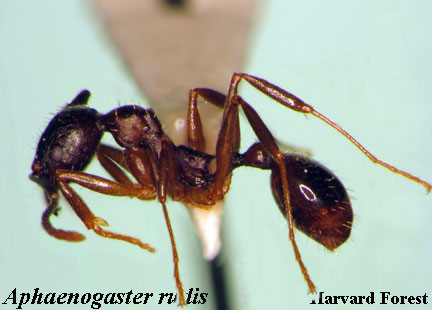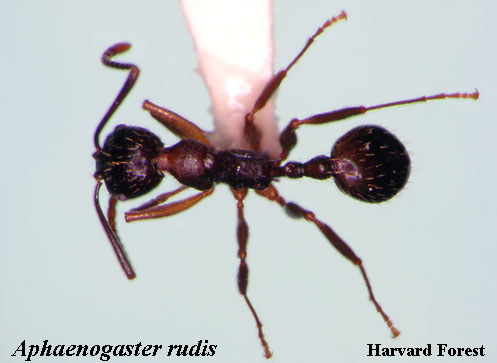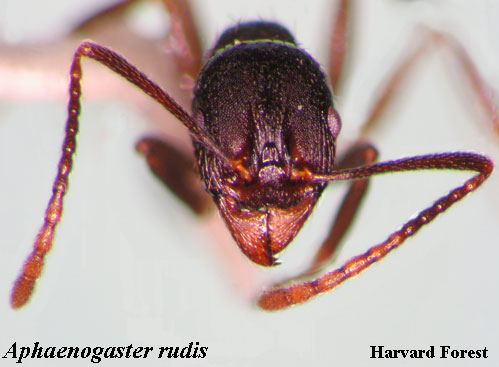1a. Altitrunk and gaster lacking in long erect hairs on dorsum; gena lacking erect hairs; postpetiole broader than long (viewed from above); propodeal spines as long or longer than distance between tips
A. tennesseensis
1b. Altitrunk, gaster, and gena with erect hairs; postpetiole longer than broad; propodeal spines normally shorter than distance between tip 2
2a. Postpetiole very broad posteriorly; posterior end > 1.5× width of anterior end; base of antennal scape (viewed from side) lobate and strongly thickened, angular n A. treatae
2b. Postpetiole < 1.5× width of anterior end; base of antennal scape not lobate 3
3a. Apical (terminal) 4 segments of antenna lighter in color and contrasting with darker basal segments; legs and fore-coxa may be greyish-brown; propodeal spines directed upward and more than half as long as the slope (“declivity”) of the propodeum; prominent protuberances on the mesonotum that extend above the level of the pronotum; pronotum with dorsal rugae (faint to distinct); surface not smooth and glossy A. fulva
3b. Antennal segments all the same color; legs and coxae not infuscate and distinctly contrasting in color with altitrunk; propodeal spines relatively short; low (not prominent) protuberances on the mesonotum A. rudis complex
Aphaenogaster rudis


